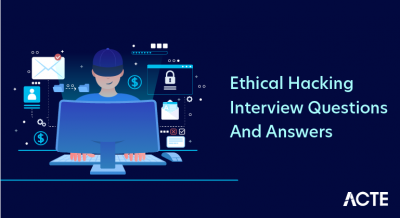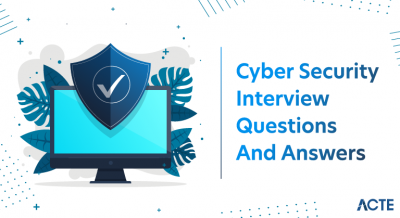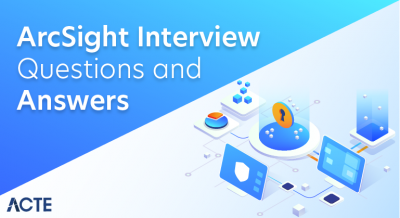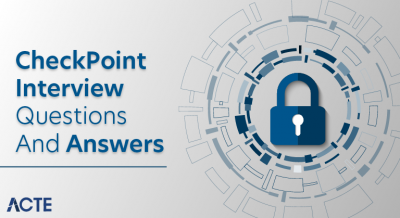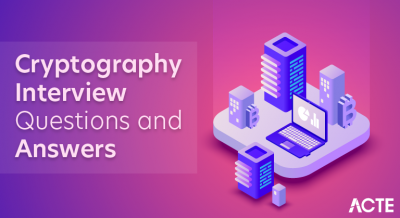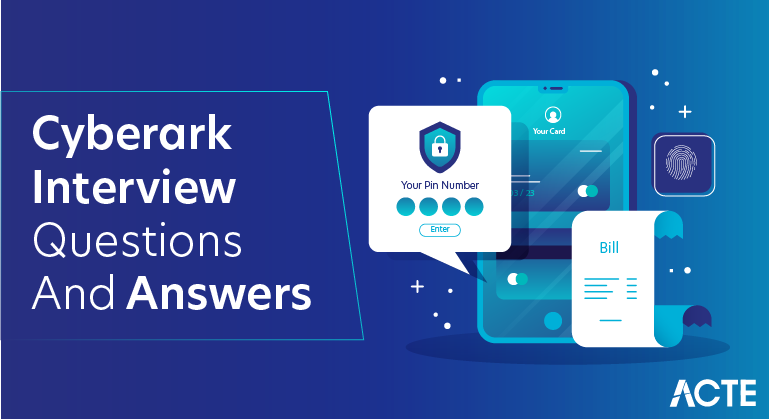
A well-known cybersecurity firm with a focus on privileged access management (PAM) systems is CyberArk. Securing and managing the privileged accounts and credentials that grant broad access to an organization’s most sensitive systems and data is the primary responsibility of PAM, which is a crucial component of cybersecurity. Through the protection of privileged access, user activity monitoring, and policy enforcement against unauthorized access, CyberArk’s PAM solutions assist enterprises in thwarting cyber threats. Password vaulting, session monitoring, threat analytics, and automated workflows are just a few of the features available on the company’s platform.
1. What is CyberArk?
Ans:
CyberArk is a cybersecurity company that specialises in privileged access management (PAM) solutions, providing tools to secure, manage, and monitor privileged accounts and credentials.
2. What is Privileged Access Management (PAM)?
Ans:
PAM refers to the set of cybersecurity strategies and technologies for managing, monitoring, and securing access to critical systems by privileged users.
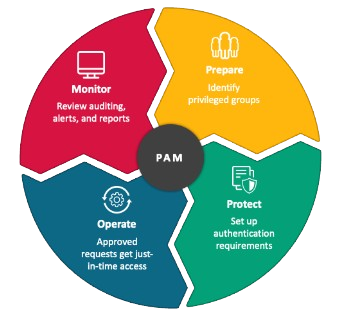
3. Explain the concept of Privileged Accounts.
Ans:
Privileged accounts have elevated permissions and access rights, allowing users to perform administrative tasks. These accounts are high-value targets for attackers.
4. What is the CyberArk Vault?
Ans:
The CyberArk Vault is a secure repository that stores and manages sensitive information, such as privileged account credentials and SSH keys.
5. Name some key components of the CyberArk solution.
Ans:
CyberArk’s comprehensive solution encompasses several key components:
- Enterprise Password Vault (EPV)
- Privileged Session Manager (PSM)
- Central Policy Manager (CPM)
- Digital Vault Infrastructure (DVI)
- Command Line Interface (CLI)
- REST API
6. Explain the purpose of the Enterprise Password Vault (EPV).
Ans:
Secure Credential Storage:EPV securely stores sensitive information such as usernames, passwords, and SSH keys associated with privileged accounts
Access Control:Only authorised users and applications with the appropriate permissions can retrieve and use these credentials.
Audit and Accountability:EPV maintains a comprehensive audit trail of all interactions with privileged credentials.
Automated Password Rotation:EPV supports automated password rotation, a key security practice that reduces the risk of unauthorised access by regularly changing passwords for privileged accounts.
7. What is a Privileged Session Manager (PSM)?
Ans:
Privileged Session Manager (PSM) is a critical component of the CyberArk solution designed to address the security challenges associated with privileged sessions. PSM ensures that privileged users access critical systems and sensitive data through controlled and monitored sessions.
8. How is CyberArk typically deployed in an organisation?
Ans:
The deployment of CyberArk typically involves the following considerations:
Cloud Deployment: Organisations can choose to deploy CyberArk in the cloud, leveraging cloud service providers such as AWS, Azure, or GCP.
Hybrid Deployment: Some organisations adopt a hybrid deployment model, combining both on-premises and cloud-based CyberArk components.
9. Explain the integration of CyberArk with Active Directory.
Ans:
The integration of CyberArk with Active Directory (AD) is crucial for managing and securing privileged accounts associated with AD.This includes accounts with elevated privileges such as domain administrators or service accounts used for critical operations.
10. What is the CyberArk Central Policy Manager (CPM)?
Ans:
The CyberArk Central Policy Manager (CPM) is a pivotal component within the CyberArk Privileged Access Management (PAM) solution. CPM is designed to automate and enforce security policies related to the management of privileged account credentials.
11. How does CyberArk enhance security and compliance?
Ans:
CyberArk enhances security and compliance through its comprehensive Privileged Access Management (PAM) solution, addressing the challenges associated with privileged accounts and access.
12. What is the CyberArk Digital Vault Infrastructure (DVI)?
Ans:
The CyberArk Digital Vault Infrastructure (DVI) is a key component within the CyberArk Privileged Access Management (PAM) solution, designed to provide a secure and isolated environment for executing scripts and commands without exposing sensitive credentials.
13. Role of REST API in CyberArk
Ans:
The REST API in CyberArk enables integration with external systems and applications. The REST API is crucial for orchestrating privileged access management tasks, retrieving information, and integrating CyberArk with other security tools and workflows.
14. What is CyberArk’s Role in Threat detection?
Ans:
CyberArk helps in threat detection by monitoring and analysing privileged account activity.It provides real-time alerts and reports, enhancing the organisation’s ability to detect and respond to potential security incidents promptly.
15. Differentiate between CyberArk AIM and PSM.
Ans:
| Feature | AIM | PSM | |
| Primary Function |
Oversees connections between applications. |
Manages and safeguards sessions for privileged users. | |
| Access Control | Control of Access Controls access to confidential information using automated | restricts access to sensitive systems and keeps an eye on user behaviour | |
| Authentication Methods | Techniques for Authentication mainly API-based application authentication | Supports a range of user and application authentication techniques | |
| Target Audience |
IT departments in charge of app connections and machine identities |
Teams from IT and security that are in charge of managing privileged user access |
16. What is the significance of Automated Password Rotation in CyberArk?
Ans:
- Automated password rotation is crucial for enhancing security by regularly changing passwords for privileged accounts.
- CyberArk automates this process, ensuring that passwords are rotated at scheduled intervals.
17. Define CyberArk’s Password Rotation Management
Ans:
CyberArk manages the password rotation process through its Conjur and Password Vault solutions. Password policies are configured to enforce rotation schedules, and the solution automates the generation and updating of passwords for privileged accounts.
18. List CyberArk Certifications.
Ans:
Some CyberArk certifications include:
- CyberArk Certified Delivery Engineer (CCDE)
- CyberArk Certified Defender – Sentry (CCD-S)
- CyberArk Certified Defender – Sentry (CCD-S) + Defender – Sentry (CCD-S) Bundle
19. Describe the importance of CyberArk Certification
Ans:
CyberArk certification is essential for professionals in the field as it validates their expertise in implementing and managing CyberArk solutions. Certification demonstrates a thorough understanding of privileged access security concepts and tools, making individuals more competitive in the job market and trusted by organisations looking to secure their sensitive information.
20. Explain the best practices for securing privileged Accounts with CyberArk
Ans:
- Regularly update and rotate privileged account credentials.
- Implement strong password policies and multi-factor authentication.
- Monitor and analyse privileged account activity for suspicious behaviour.
21. Describe Integration of CyberArk into DevOps Processes
Ans:
CyberArk can be integrated into DevOps processes to secure and manage privileged credentials used in automated workflows. Integrating CyberArk with DevOps tools ensures that sensitive credentials are securely stored, accessed, and rotated within the CI/CD pipeline.
22. Explain the role of CyberArk Conjur in DevOps.
Ans:
CyberArk Conjur plays a crucial role in DevOps by securely managing and rotating secrets, API keys, and other sensitive credentials used in automated workflows. It provides a centralised platform for storing and retrieving secrets, ensuring that privileged access within the DevOps pipeline is controlled and audited.
23. What are the Security Challenges in Cloud Environments?
Ans:
CyberArk addresses security challenges in cloud environments by providing solutions that adapt to the dynamic nature of cloud infrastructure. It offers comprehensive privileged access management for cloud resources ensuring that credentials are securely stored, rotated, and accessed.
24. Considerations for Deploying CyberArk in a Cloud Environment
Ans:
Integration with Cloud Platforms
- Scalability
- Compliance
- Network Connectivity
- Automation
25. Explain the CyberArk’s Role in Incident Response.
Ans:
CyberArk aids in incident response by providing real-time monitoring and alerting capabilities. It detects anomalous privileged account activity and provides insights into potential security incidents.
26. What is Multi-Factor Authentication (MFA) Support?
Ans:
Yes, CyberArk supports multi-factor authentication (MFA). Multi-factor authentication adds an extra layer of security by requiring users to provide multiple forms of identification before accessing sensitive systems or data.
27. List Emerging Trends in CyberArk and Privileged Access Management
Ans:
- Zero Trust Privilege
- Cloud-Based PAM
- Integration with DevOps
- Behavioural Analytics
28. List the importance of User Training in CyberArk Implementation
Ans:
- Understanding the Platform
- Security Awareness
- Best Practices
- Reducing Human Errors
29. How does CyberArk manage the lifecycle of privileged accounts?
Ans:
- CyberArk facilitates the entire lifecycle of privileged accounts.
- During onboarding, accounts are securely stored in the CyberArk Vault, ensuring that credentials are protected.
- The platform automates password rotations based on policies, reducing the risk of credential misuse.
30. Can you explain the role of CyberArk’s Just-In-Time (JIT) Privilege Access?
Ans:
- CyberArk’s JETPrivilege Access minimises the exposure of privileged credentials by granting temporary, time-limited access to users.
- Instead of having standing privileges, users request access for a specific task or time frame.
- CyberArk verifies the request against policies and approvals before dynamically providing the necessary privileges.
31. How does CyberArk support high availability?
Ans:
CyberArk ensures high availability through a distributed architecture with redundant components. Vaults, components, and databases can be clustered for fault tolerance. CyberArk also supports disaster recovery by enabling organisations to replicate Vaults and components across geographically diverse locations.
32. What ways does CyberArk assist organisations in meeting compliance requirements?
Ans:
CyberArk aids organisations in meeting compliance requirements by providing comprehensive auditing, reporting, and policy enforcement capabilities. The platform assists in complying with regulations such as GDPR, HIPAA, and SOX by ensuring secure management of privileged accounts, maintaining detailed audit logs, and enforcing least privilege access.
33. How does CyberArk address the challenge of credential sprawl ?
Ans:
Credential sprawl, where credentials are scattered across various systems, poses a security risk. CyberArk addresses this challenge by centralising the management of privileged accounts and secrets.
34. Explain the process of implementing Privileged Threat Analytics (PTA) in CyberArk.
Ans:
Privileged Threat Analytics (PTA) in CyberArk involves the use of advanced analytics and machine learning to detect and respond to threats related to privileged accounts.
35. How does CyberArk contribute to securing DevOps process?
Ans:
CyberArk supports DevOps processes by providing Conjur, a solution specifically designed for DevOps integration. Conjur manages and secures secrets used in automated workflows, ensuring that sensitive information is protected throughout the CI/CD pipeline.
36. How does CyberArk help organisations enforce the principle of least privilege?
Ans:
CyberArk enforces least privilege by tightly controlling access to privileged accounts, implementing just-in-time access, and regularly rotating credentials. By providing the minimum access necessary, organisations can reduce the risk of unauthorised activities.
37. What role does CyberArk play privileged access to such as Industrial Control Systems (ICS)?
Ans:
CyberArk extends its privileged access management capabilities to critical infrastructure components, including Industrial Control Systems (ICS).The platform enforces least privilege, monitors privileged sessions, and ensures that only authorised personnel have the necessary access to control and manage industrial processes.
38. How does CyberArk stay updated with the latest cybersecurity threats?
Ans:
CyberArk stays informed about the latest cybersecurity threats by actively monitoring the threat landscape and collaborating with threat intelligence providers. The platform incorporates threat intelligence feeds into its solutions to enhance its ability to detect and respond to emerging threats.
39. Elaborate on capabilities of CyberArk with Security Information Event Management solutions?
Ans:
- CyberArk integrates seamlessly with SIEM solutions, allowing organisations to consolidate privileged access data into their centralised security monitoring platforms.
- This integration enhances overall security monitoring by providing a holistic view of privileged account activities.
40. How does it enhance overall security monitoring?
Ans:
SIEM systems can ingest logs and alerts from CyberArk, enabling real-time threat detection, correlation of security events, and streamlined incident response. The combined capabilities of CyberArk and SIEM solutions contribute to a more comprehensive and proactive security posture.
41. Explain the concept of Dynamic Access Management in CyberArk.
Ans:
Dynamic Access Management in CyberArk involves dynamically adjusting access privileges based on real-time risk assessmentsThis dynamic approach ensures that users have the necessary access only when required, reducing the risk of privilege misuse and enhancing overall security.
42. How does CyberArk manage privileged access in hybrid cloud environments?
Ans:
CyberArk provides solutions that seamlessly integrate with hybrid cloud environments. Organisations can leverage CyberArk to secure and control access to critical resources in their hybrid environments, enforcing consistent security policies and compliance standards.
43. What role does CyberArk play in securing containerized environments?
Ans:
CyberArk contributes to securing containerized environments by managing and protecting the privileged accounts associated with containers and container orchestration platforms.
44. How does CyberArk address the challenges of securing privileged access?
Ans:
CyberArk addresses the challenges of securing privileged access in remote work scenarios by providing secure remote access capabilities.The platform’s ability to enforce policies and monitor remote privileged sessions contributes to maintaining a secure environment, even in the face of the increasing trend towards remote work.
45. Elaborate on CyberArk’s capabilities for managing non-human identities?
Ans:
CyberArk manages non-human identities, such as service accounts and application credentials, through its robust Privileged Account Management features.
46. How does CyberArk assist organisations in securing Big Data environments?
Ans:
CyberArk ensures the security of privileged access in Big Data environments by managing and securing the credentials associated with Big Data platforms such as Hadoop and Spark.
47. What strategies does CyberArk employ for securing privileged access?
Ans:
CyberArk employs several strategies for securing privileged access in multi-cloud environments. This includes consistent policy enforcement across different cloud platforms, integration with cloud provider APIs for secure access management, and the ability to manage and rotate credentials consistently in diverse cloud environments.
48. How does CyberArk address the challenge of securing privileged access?
Ans:
CyberArk addresses the challenge of securing privileged access in DevOps environments through its Conjur solution. Conjur integrates with DevOps tools, ensuring that secrets and credentials used in automated workflows are securely managed.
49. Can you discuss securing privileged access in microservices architectures?
Ans:
CyberArk secures privileged access in microservices architectures by managing secrets and credentials associated with microservices. Through integrations with container orchestration platforms and microservices frameworks, CyberArk ensures that each microservice has secure access to the necessary credentials.
50. How does CyberArk contribute to securing the supply chain?
Ans:
- CyberArk enhances supply chain security by facilitating secure third-party access to privileged resources.
- Through features like secure remote access and just-in-time access, CyberArk ensures that third-party vendors obtain temporary and controlled access to the required resources.
51. How does CyberArk handle the challenge of credential sprawl?
Ans:
CyberArk addresses the challenge of credential sprawl by providing a centralised vault for storing and managing privileged credentials. The platform consolidates credentials, enforces policies for secure access, and automates the rotation of credentials.
52. How will you check in a string that all characters are whitespaces?
Ans:
CyberArk supports the management of privileged access in legacy systems and traditional IT environments by providing integrations with a wide range of technologies.
53. How CyberArk supports the management of privileged access in legacy systems?
Ans:
CyberArk supports the management of privileged access in legacy systems and traditional IT environments by providing integrations with a wide range of technologies.
54. How does CyberArk contribute to securing the authentication?
Ans:
CyberArk enhances the security of authentication and authorization processes in web applications by managing and securing the privileged credentials associated with web servers and application databases.
55. Elaborate CyberArk’s approach to securing privileged access in critical sectors?
Ans:
In critical sectors like healthcare and finance, CyberArk employs a comprehensive approach to securing privileged access. This includes enforcing strict access controls, monitoring and auditing privileged sessions, and ensuring compliance with industry-specific regulations such as HIPAA and PCI DSS.
56.How does CyberArk assist organisations in automating the diverse IT environments?
Ans:
CyberArk assists organisations in automating the management of privileged access through its automation-friendly features and robust APIs. The platform allows organisations to programmatically interact with CyberArk functionalities, enabling the automation of tasks such as password retrieval, rotation, and policy enforcement.
57. How will you get a space-padded string with the original string left-justified?
Ans:
CyberArk leverages security analytics by applying machine learning algorithms to analyse large datasets of privileged access activity. The platform identifies patterns indicative of malicious behaviour, anomalies in user activity, and potential security threats.
58. How does CyberArk protect privileged accounts against credential-based attacks?
Ans:
CyberArk protects privileged accounts against credential-based attacks through features like password rotation, strong authentication, and session monitoring. The platform automatically rotates credentials to minimise the impact of compromised passwords.
59. Discuss the role of CyberArk in preventing lateral movement.
Ans:
CyberArk plays a crucial role in preventing lateral movement by controlling and monitoring privileged access. By monitoring and auditing privileged sessions, CyberArk detects and alerts on anomalous lateral movement patterns, allowing organisations to respond quickly and mitigate the risk of unauthorised access to critical systems.
60. How does CyberArk contribute to secure DevSecOps practices.
Ans:
CyberArk contributes to secure DevSecOps practices by providing Conjur, a solution designed for DevOps integration. Conjur manages and secures secrets used in automated workflows, ensuring that sensitive information is protected throughout the software development lifecycle.
61. Discuss CyberArk’s role in securing API keys in application development.
Ans:
CyberArk secures API keys and other secrets used in modern application development by providing a secure vault for managing and rotating these credentials. The platform integrates with application development frameworks and API management tools, ensuring that sensitive information is protected throughout the development and deployment process.
62. How does CyberArk assist organisations in meeting regulatory compliance requirements?
Ans:
CyberArk assists organisations in meeting regulatory compliance requirements by providing features such as detailed auditing, reporting, and policy enforcement. The platform ensures that privileged access is managed securely and that organisations can demonstrate compliance with regulations such as GDPR, HIPAA, and SOX.
63. What is the significance of CyberArk’s Endpoint Privilege Manager?
Ans:
CyberArk’s Endpoint Privilege Manager (EPM) is significant in the context of endpoint security as it enforces least privilege policies on endpoints. EPM ensures that users and applications have only the necessary privileges, reducing the risk of privilege escalation and endpoint-related security incidents.
64. How does CyberArk contribute to threat intelligence-driven security?
Ans:
CyberArk contributes to threat intelligence-driven security by integrating threat intelligence feeds into its solutions. The platform stays updated on the latest cybersecurity threats by actively monitoring the threat landscape.
65. What role does CyberArk play in securing the Internet of Things (IoT)?
Ans:
CyberArk contributes to securing IoT devices by managing and securing the privileged accounts associated with these devices. The platform ensures that access to IoT devices is controlled, monitored, and audited.
66. How does CyberArk align with the principles of Zero Trust Security?
Ans:
CyberArk aligns with the principles of Zero Trust Security by assuming no inherent trust and verifying every user and device accessing resources.Features such as just-in-time access, session isolation, and adaptive access controls support a Zero Trust approach, ensuring that privileged access is granted based on contextual factors and risk assessments.
67. Explain the concept of CyberArk Threat Response and its role.
Ans:
CyberArk Threat Response is a component within the CyberArk Privileged Access Security solution that focuses on automating and orchestrating incident response processes. It enables organisations to quickly respond to security incidents involving privileged accounts.
68. How does CyberArk leverage artificial intelligence (AI) in its solutions?
Ans:
CyberArk leverages artificial intelligence in its solutions by applying machine learning algorithms to analyse privileged access data. AI enhances threat detection by identifying patterns indicative of malicious behaviour, anomalies in user activity, and potential security threats.
69. What considerations are important when deploying CyberArk in a cloud environment?
Ans:
When deploying CyberArk in a cloud environment, considerations include integration with specific cloud platforms, scalability, compliance requirements, network connectivity, and automation.
70. How does CyberArk assist organisations in achieving GDPR compliance?
Ans:
CyberArk assists organisations in achieving GDPR compliance by securing and managing access to sensitive data. The platform enforces the principle of least privilege, ensuring that only authorised users have access to personal data.
71. What is the role of CyberArk Discovery and Assessment in privileged?
Ans:
CyberArk Discovery and Assessment play a vital role in privileged access management
72. What is the purpose of the CyberArk Privileged Session Manager (PSM)?
Ans:
PSM provides a secure way to monitor, record, and control privileged sessions, allowing organisations to track and audit activities performed by privileged users.
73. Explain the concept of credential rotation.
Ans:
Credential rotation involves regularly changing passwords for privileged accounts to reduce the risk of unauthorised access. CyberArk automates this process to enhance security.
74. What is the purpose of the CyberArk Privileged Session Manager (PSM)?
Ans:
PSM provides a secure way to monitor, record, and control privileged sessions, allowing organisations to track and audit activities performed by privileged users.
75. Explain the concept of credential rotation.
Ans:
Credential rotation involves regularly changing passwords for privileged accounts to reduce the risk of unauthorised access. CyberArk automates this process to enhance security.
76. Key considerations when implementing CyberArk in an enterprise.
Ans:
Define policies, train users, integrate with existing systems, and regularly audit privileged access.
77. How does CyberArk support high availability and disaster recovery?
Ans:
Provides options for continuous access to privileged accounts during unexpected events.
78. List the Steps CyberArk takes to ensure the security of its platform.
Ans:
Follows best practices:
- Updates solutions
- Undergoes security testing
- Addresses vulnerabilities promptly.
79. Role of CyberArk’s Digital Vault in securing sensitive information.
Ans:
Secures and manages sensitive information beyond privileged account credentials.
- Encryption
- Auditing and Logging
- Lifecycle Management
- Automated Rotation
80. How does CyberArk assist in managing and securing service accounts?
Ans:
- Secure Storage
- Credential Rotation
- Access Control
- Least Privilege Principle
- Monitoring and Auditing
- Session Isolation
81. What is the CyberArk Alero’s purpose in enhancing remote privileged access?
Ans:
CyberArk Alero serves as a secure solution for remote privileged access, specifically designed to enhance accessibility without compromising security.
82. How does CyberArk manage and secure non-human identities?
Ans:
CyberArk recognizes the significance of securing non-human identities, such as APIs and bots, which often have privileged access. The solution achieves this through robust credential management and access control mechanisms.
83. Describe the process of onboarding and offboarding privileged users in CyberArk.
Ans:
Onboarding privileged users in CyberArk involves adding them to the system, defining their roles, and granting the necessary access privileges. This process includes securely storing their credentials in the CyberArk Vault.
84. How does CyberArk prevent and respond to credential theft and lateral movement?
Ans:
CyberArk employs a multi-faceted approach to prevent and respond to credential theft and lateral movement. Credential theft prevention involves secure credential storage, regular rotation, and the enforcement of least privilege.
85. Explain CyberArk’s role in securing third-party access.
Ans:
CyberArk plays a crucial role in securing third-party access by providing a controlled and monitored environment for external entities. The solution allows organisations to define and enforce access policies, ensuring that third parties have access only to the resources necessary for their tasks.
86. How does CyberArk contribute to a Zero Trust security model?
Ans:
CyberArk aligns with the principles of the Zero Trust security model by assuming a “never trust, always verify” approach. The solution enforces least privilege, ensuring that users, whether internal or external, have the minimum access necessary to perform their tasks.
87. Explain Credential Rotation.
Ans:
Credential rotation is the practice of regularly changing passwords or access credentials associated with privileged accounts. In the context of CyberArk, credential rotation is automated and ensures that passwords are changed at predefined intervals.
88. Describe privileged Threat Analytics (PTA) Concept.
Ans:
Privileged Threat Analytics (PTA) is a feature in CyberArk that focuses on detecting and mitigating threats related to privileged accounts. PTA uses advanced analytics and machine learning algorithms to analyse user behaviour, identify deviations from normal patterns, and detect potential insider threats or external attacks targeting privileged access.
89. Explain the concept of Just-In-Time Access in CyberArk and its significance.
Ans:
Just-In-Time Access in CyberArk refers to granting temporary, specific privileges to users for a limited duration. This ensures that users have access only when needed, reducing the risk of prolonged exposure. It aligns with the principle of least privilege, enhancing security by minimising the window of vulnerability.
90. How does CyberArk contribute to securing DevOps pipelines?
Ans:
CyberArk secures DevOps pipelines by integrating with CI/CD tools, managing and securing secrets used in the pipeline, enforcing access controls, and ensuring that security is embedded throughout the development process. This approach helps in achieving DevSecOps practices.


